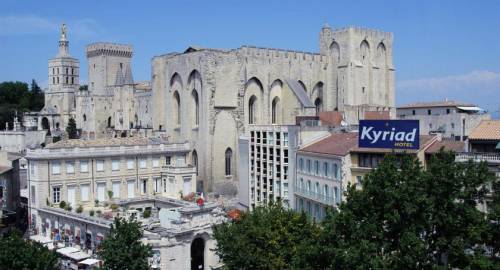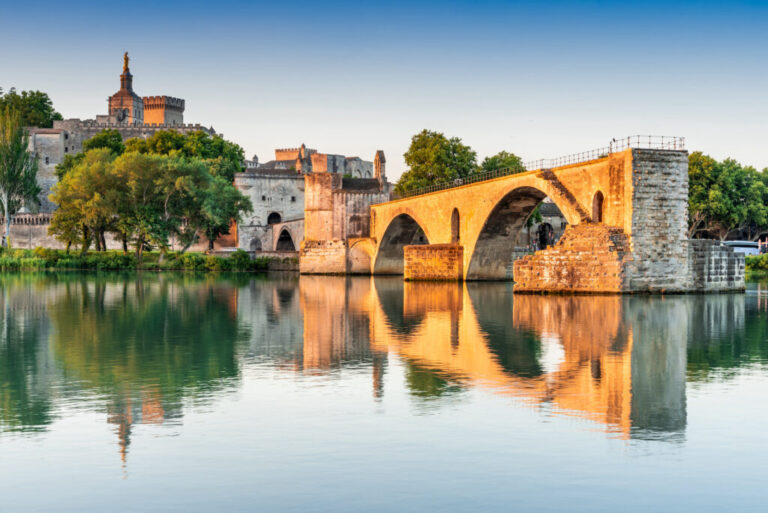The Historical Origins of Papilor Palace: A Look Into Its Beginnings
The captivating tale of Papilor Palace traces its beginnings to the late 19th century when it was commissioned by King Carol I of Romania. However, its origins extend further back, as the site originally hosted a residence belonging to a 17th-century Mogoșoaia nobleman. In his quest for an elegant summer retreat near Bucharest, King Carol I acquired this estate and initiated the construction of what would eventually become Papilor Palace, enriching Romania’s collection of royal treasures.

Architectural Fusion: The Diverse Styles of Papilor Palace
Papilor Palace is an architectural marvel that features a blend of various styles, each contributing to a rich visual narrative:
Neoclassical Grandeur
The imposing facade of Papilor Palace, adorned with elegant symmetrical columns and a stately entrance, exemplifies the principles of Neoclassical architecture—a prevalent style in 19th-century Europe that signified power and sophistication.
Art Nouveau Elements
Upon closer inspection, the delicate touches of Art Nouveau become apparent, showcasing intricate organic forms and nature-inspired motifs. These elements infuse the palace’s design with a sense of fluidity and artistic charm.
Romanian Vernacular Features
Incorporating traditional Romanian architectural aspects such as decorative brickwork and wooden balconies, the palace pays homage to the country’s vernacular style, seamlessly blending European influences with local traditions.
Royal Life and Sorrows Within Papilor Palace
Papilor Palace was a treasured summer getaway for King Carol I and Queen Elisabeth, hosting opulent royal receptions and intimate gatherings within its grand walls. However, following Queen Elisabeth’s death in 1916, the palace entered a prolonged state of neglect, losing much of its former splendor.
The Revival of Papilor Palace: From Decay to Cultural Renaissance
The 20th century heralded a period of revival for Papilor Palace. After years of abandonment, significant restoration efforts commenced, repurposing the palace for various governmental roles. Today, it thrives as the headquarters of the National Museum Complex “Iulia Hasdeu,” preserving its rich legacy and inviting visitors to experience a fusion of Romania’s history and culture.
Discovering the National Museum Complex: Art and History Reimagined
The National Museum Complex situated within Papilor Palace is a treasure trove of Romania’s artistic and historical heritage. The exhibits include:
Collections of Romanian Art
Explore an extensive array of paintings, sculptures, and decorative items that reflect various eras in Romanian history, offering a unique perspective on the nation’s evolving artistic landscape.
Historical Displays on Romania’s Heritage
Visitors can delve into Romania’s political and social history through carefully curated exhibits, illuminating the country’s vibrant yet tumultuous past.
Honoring Iulia Hasdeu
A significant aspect of the museum complex is the homage to Iulia Hasdeu, the daughter of renowned Romanian historian Bogdan Petriceicu Hasdeu. The exhibits highlight her life, literary contributions, and untimely death, preserving her lasting impact on Romanian literature.
The Gardens of Papilor Palace: A Nature Lover’s Paradise
Surrounding the palace is an expansive expanse of beautifully manicured gardens, providing visitors with a serene escape from the hustle and bustle of urban life. Stroll through the meticulously maintained lawns, admire a variety of vibrant flora, and find your own peaceful corner to enjoy the tranquil atmosphere.
Essential Visitor Information: Preparing for Your Visit to Papilor Palace
If you’re planning a visit to Papilor Palace, here are some crucial details to help you maximize your experience:
Location and Accessibility to Bucharest
Papilor Palace is situated in the town of Buftea, merely 15 kilometers northwest of Romania’s capital, Bucharest, making it a convenient destination for tourists.
Operating Hours and Admission Fees
Opening times and entrance fees may fluctuate depending on the season, so it’s advisable to check the official website of the National Museum Complex “Iulia Hasdeu” for current information before your visit.
Guided Tour Options
To enhance your experience, guided tours are available in both Romanian and English, providing insightful commentary on the history, architecture, and significance of the palace.
Accessibility Features
The grounds of Papilor Palace are generally accessible to visitors with disabilities; however, it is recommended to verify specific details regarding accessibility facilities on the museum’s website.
Combining Your Visit: Additional Attractions Near Papilor Palace
While visiting Papilor Palace, consider extending your exploration to Bucharest, where you can discover the city’s rich historical sites and cultural landmarks, creating a comprehensive experience that intertwines urban and regal charm.
The Cultural Importance of Papilor Palace: A Lasting Symbol
Papilor Palace signifies much more than a historical site; it encapsulates Romania’s artistic and cultural legacy. Its transformation from a royal residence to a museum serves as a testament to the country’s resilience and commitment to preserving its heritage for future generations.
An Inspiration for Future Generations
For contemporary visitors, Papilor Palace serves as a beacon of artistic inspiration. With its breathtaking architecture and rich history, the palace continues to inspire new generations to appreciate the significance of history, culture, and the preservation of architectural beauty.
A Multifaceted Experience: Catering to All Interests
Papilor Palace provides something for everyone, from history enthusiasts to art lovers and nature fans:
History Buffs
Explore Romania’s royal history and uncover the political and social events that shaped the nation through the palace’s numerous historical exhibits.
Art Aficionados
Delight in the carefully curated collections of Romanian art, spanning various periods and styles, offering insight into the country’s artistic evolution.
Nature Lovers
Wander through the expansive palace gardens, where Romania’s natural beauty is showcased through lush greenery and vibrant blooms.
Family-Friendly Destination
With engaging exhibits and a family-friendly atmosphere, Papilor Palace is an ideal spot for educational family outings that will ignite curiosity in both children and adults.
Discovering the Surroundings: Unveiling the Charms of Buftea
After your visit to Papilor Palace, take time to explore the nearby town of Buftea. Here, you’ll encounter delightful eateries, local boutiques, and a warm atmosphere that provides an authentic glimpse into Romanian life. Who knows—you might even uncover some delectable local dishes or unique souvenirs to cherish as reminders of your journey through Romania’s vibrant cultural landscape.
The Regal Foundations: King Carol I’s Vision for Papilor Palace
The inception of Papilor Palace can be traced back to King Carol I, whose vision was to create an opulent retreat near the capital. His admiration for European architecture and dedication to Romania’s cultural heritage shaped the palace’s development. Initially intended as a summer escape, the construction of the palace reflects Carol I’s desire to meld grandeur with the tranquility of Romania’s landscape, solidifying its status as a royal residence.
The 17th-Century Legacy: The Noble Residence Preceding Papilor Palace
Before Papilor Palace graced the land, the site was home to a 17th-century boyar residence. The nobleman who originally owned the estate left a rich historical legacy that King Carol I aimed to honor. By incorporating elements from the former estate, the palace became a symbol of continuity between Romania’s past and future. This combination of old and new is one reason visitors are enchanted by the palace’s multifaceted history.
The Influence of Queen Elisabeth: Royal Life at Papilor Palace
Queen Elisabeth, the wife of King Carol I, played an essential role in the narrative of Papilor Palace. Renowned for her refined tastes and passion for the arts, she helped shape the cultural atmosphere of the palace. The royal couple’s time at Papilor was marked by extravagant receptions, artistic gatherings, and intimate family moments. Queen Elisabeth’s influence extended beyond the palace’s walls, leaving a lasting imprint on Romania’s cultural landscape.
The Decline and Neglect: Papilor Palace After Queen Elisabeth’s Death
Following Queen Elisabeth’s passing in 1916, the palace fell into a state of neglect. No longer a royal residence, Papilor Palace began to deteriorate as Romania experienced political and social upheaval in the early 20th century. This era of decline starkly contrasted the palace’s golden years, yet it also paved the way for its eventual rebirth.
Papilor Palace During the Communist Period: An Era of Transformation
Under communist rule in Romania, Papilor Palace, like many royal estates, experienced a significant transformation. No longer a symbol of royalty, the palace was repurposed for governmental functions and underwent substantial alterations. While some regal features were preserved, others were sacrificed to accommodate its new administrative role. This chapter in the palace’s history reflects the broader shifts in Romania’s political landscape.
The Restoration Journey: Reviving Papilor Palace
In the late 20th century, efforts to restore Papilor Palace commenced. This involved meticulous work to reclaim its architectural splendor while adapting it for modern use. Architects and historians collaborated to ensure the palace’s original features, from its neoclassical facade to its Romanian vernacular elements, were preserved. This period marked a turning point, returning the palace to its former glory while enabling it to serve as a cultural and historical landmark.
Papilor Palace and the Contemporary Museum Experience
Today, Papilor Palace stands as a key attraction within the National Museum Complex “Iulia Hasdeu.” The museum’s thoughtfully curated exhibits allow visitors to delve into Romanian history, art, and culture through the lens of this once-royal estate. Each room narrates a chapter in Romania’s story, from royal life to artistic achievements, encouraging visitors to engage with the nation’s past.

Engaging Events and Programs: The Dynamic Life of Papilor Palace
In addition to its exhibits, Papilor Palace hosts various events and educational programs aimed at fostering a deeper understanding of Romanian culture. Workshops, lectures, and special exhibitions encourage community involvement, transforming the palace into a vibrant cultural hub that thrives beyond its historical significance.
Your Invitation to Papilor Palace: Embracing the Past, Present, and Future
In conclusion, Papilor Palace invites you on a captivating journey through Romania’s regal past, rich artistry, and vibrant culture. Whether you’re an avid history enthusiast, an art lover, or simply seeking a tranquil escape in nature, this palace stands as a testament to the beauty and resilience of Romanian heritage.
Plan your visit today to uncover the stories that echo within its walls, walk through its enchanting gardens, and immerse yourself in the cultural tapestry that Papilor Palace represents.

